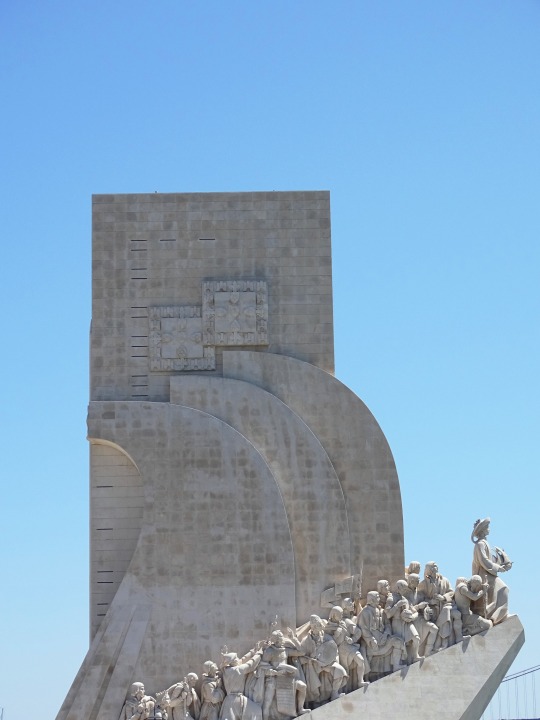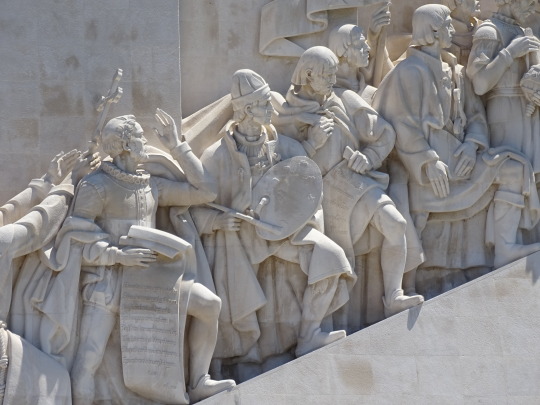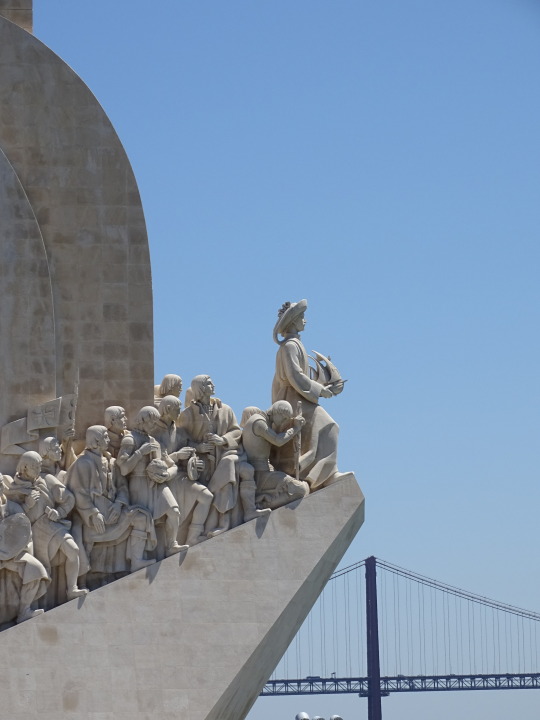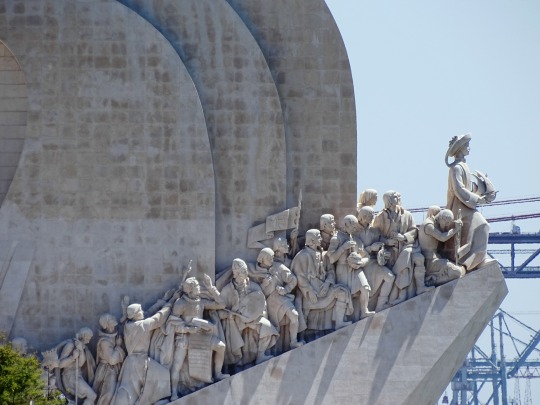#António de Oliveira Salazar
Text

António de Oliveira Salazar
#suitdaddy#suiteddaddy#suit and tie#suited daddy#men in suits#daddy#suited grandpa#suitedman#silverfox#suit daddy#suitfetish#three piece suit#suited men#buisness suit#suited man#suitedmen#Portuguese men#Portuguese man#António de Oliveira Salazar#Antonio de Oliveira Salazar
22 notes
·
View notes
Text

#Ryszard Kapuscinski#Angola#Raul De La Fuente#Damian Nenow#Animated Film#Operación Carlota#Cuban Revolution#Portuguese Colonization#António de Oliveira Salazar#African Liberation#photojournalism
2 notes
·
View notes
Text
Unlocked Book of the Month: Consensus and Debate in Salazar's Portugal
Each month we’re highlighting a book available through PSU Press Unlocked, an open access initiative featuring scholarly digital books and journals in the humanities and social sciences.

About our September pick:
Ellen Sapega’s study documents artistic responses to images of the Portuguese nation promoted by Portugal’s Office of State Propaganda under António de Oliveira Salazar. Combining archival research with current theories informing the areas of memory studies, visual culture, women’s autobiography, and postcolonial studies, the author follows the trajectory of three well-known cultural figures working in Portugal and its colonies during the 1930s and 1940s.
The book begins with an analysis of official Salazarist culture as manifested in two state-sponsored commemorative events: the 1938 contest to discover the “Most Portuguese Village in Portugal” and the 1940 Exposition of the Portuguese-Speaking World. While these events fulfilled their role as state propaganda, presenting a patriotic and unambiguous view of Portugal’s past and present, other cultural projects of the day pointed to contradictions inherent in the nation’s social fabric. In their responses to the challenging conditions faced by writers and artists during this period and the government’s relentless promotion of an increasingly conservative and traditionalist image of Portugal, José de Almada Negreiros, Irene Lisboa, and Baltasar Lopes subtly proposed revisions and alternatives to official views of Portuguese experience.
These authors questioned and rewrote the metaphors of collective Portuguese and Lusophone identity employed by the ideologues of Salazar’s Estado Novo regime to ensure and administer the consent of the national populace. It is evident, today, that their efforts resulted in the creation of vital, enduring texts and cultural artifacts.
Read more and access the book here: https://www.psupress.org/books/titles/978-0-271-03410-2.html
See the full list of Unlocked titles here: https://www.psupress.org/unlocked/unlocked_gallery.html
#António de Oliveira Salazar#Salazar#Portugal#Portuguese#Lusophone#Salazarist#1930s#1940s#History#Modernism#Modern#20th Century#Twentieth Century#PSU Press#PSU Press Unlocked
0 notes
Text
lets go hannah nation, this is the end of book 7! context in first post, check the first tag
Book 7 - Crisis, Ideological clashes and cultural mutations in the first half of the 20th century
Part 4 - Portugal: the Estado Novo
The military coup that brought down the First Republic failed to fix the country, and economic and political instability remained. In 1928, António de Olivera Salazar is invited to the government as Minister of Finances, and miraculously, for the first time in a long time, the country is no longer losing money. Seeing this, he's immediately invited to govern the country. His government becomes known as the Estado Novo, authoritarian, catholic, conservative and tradicionalist. Overvalues the rural world, and strongly protects the Catholic church. The regime then slowly gets itself closer to Italian Fascism, with a Cult of Personality, Nationalism, Authoritarianism, Corporativist(to prevent class warfare workers and bosses are grouped together in corporations in order to work out their issues, under the supervision of the State), and milicia groups and the Secretary of National Propaganda are created.
All aspects of the press is inspected and censored, and a political police, the PVDE(later on the PIDE) is created.
The intervencionist and autarkic measures of the Estado Novo led to financial stability, and there was a lot of investment in public works. However, due Salazar's hatred for industrialism and the urban world, and extreme value given to the rural world, industrialization was an extremely difficult process, as numerous obstacles existed preventing new industries from developing, and creating monopolies with the few existing ones.
The Estado Novo also practiced a "policy of spirit", where through art, literature, theatre, arquitecture, etc, the State wanted to produce cultural works, submited to the ideals of the regime, that showed the "greatness" of Portuguese history, and show it off to the world.
Part 5 - The degradation of the international climate
In Spain the Popular Front, a broad coalition of centre-right and left-wing parties in opposition to Fascism, wins the elections. But far-right polititians blame them for all the problems in the country, and many generals, namely Francisco Franco, stage a coup. The Republican forces manage to stop it, but are unable to completely crush them, and as a result the Spanish Civil War begins.
It immediately becomes an international issue, with both sides being supported by various groups.
The Republicans are suported by the USSR, in exchange for most of the gold reserves, by Mexico, who took in many refugees, and by the International Brigades, made up of volunteer forces from 53 different countries. France and England vow to not intervene, following the principles of the League of Nations.
The Nationalists are supported by Italy, looking to expand it's influence westward, Portugal, fearing a Republican victory in it's border, and Germany, who used the civil war as an "experimental lab" for it's new military weapons.
#hannah's history lessons#spanish civil war#popular front#germany#italy#ussr#mexico#portugal#portuguese history#history#salazar#antónio de oliveira salazar#salazarismo#estado novo#nationalism#autarcy#intervencionism#francisco franco
0 notes
Text
Wait, now that we all hate JKR, is it finally okay for me to say that it's super weird that she named a fictional wizard after a fascist that lead a dictatorship in Portugal for over 40 years, or am i gonna get crucified for it again?
#tldr ''salazar slytherin'' is named after ''antónio de oliveira salazar''#and the dictatorship ended in 1974 so it's not like... in the far past
9 notes
·
View notes
Text
Portugal’s late dictator António de Oliveira Salazar was fed an “absurd” fantasy by aides to make him believe that he still governed the country for two years after he was replaced because of failing health, a new book claims.
Mr Salazar ruled Portugal from 1932 until 1968 when he suffered a series of health problems and was replaced as head of state by Marcelo Caetano.
Until his death in 1970, aides gave Mr Salazar a fake version of the newspaper Diario do Noticias each day which carried fictional stories to make it seem like he was still in charge.
Each night, the editor would create a special edition of the newspaper - just for Mr Salazar - to remove any reference to Mr Caetano and his government.
Ministers would attend meetings with the ailing dictator and even make disparaging comments against Mr Caetano, according to the newly-released book.
108 notes
·
View notes
Text
"Les âmes sans idéal sont des âmes vulgaires, qui ne connaissent pas la vie digne d'être vécue, qui ne s'élèvent pas et qui rampent continuellement dans la boue des basses sensations."
~ António de Oliveira Salazar

3 notes
·
View notes
Note
Lol I thought you were gonna say your fave historical figure was Hitler
Hahaha, very funny but i prefer António de Oliveira Salazar, which was more moderate and overall a better leader <3
You saying that says more about you than it does about me. God bless you
4 notes
·
View notes
Note
Would you say putin is a dictator?
Dictator, in modern political systems, a single person who possesses absolute political power within a country or territory or a member of a small group that exercises such power. The term comes from the Latin title dictator, which in the Roman Republic designated a temporary magistrate who was granted extraordinary powers in order to deal with state crises. Modern dictators, however, resemble ancient tyrants rather than ancient dictators. Ancient philosophers’ descriptions of the tyrannies of Greece and Sicily go far toward characterizing modern dictatorships. Dictators usually resort to force or fraud to gain despotic political power, which they maintain through the use of intimidation, terror, and the suppression of basic civil liberties. They may also employ techniques of mass propaganda in order to sustain their public support.
In Latin America in the 19th century, various dictators arose after effective central authority collapsed in the new nations recently freed from Spanish colonial rule. These caudillos, or aspiring military dictators, usually led a private army and tried to establish control over a territory before marching upon a weak national government. Antonio López de Santa Anna in Mexico and Juan Manuel de Rosas in Argentina are examples of such leaders. (See also personalismo.)
Later 20th-century dictators in Latin America were different. They were national rather than provincial leaders and often were put in their position of power by nationalistic military officers. Indeed, many of them were military officers themselves. They usually formed an alliance with a particular social class and attempted either to maintain the interests of wealthy and privileged elites or to institute far-reaching left-wing social reforms. Notable Latin American dictatorships of the second half of the 20th century included the lengthy rule of the military in Brazil from 1964 to 1985; the military dictatorship of Augusto Pinochet of Chile, who led a coup de’état in 1973 that deposed the country’s president, Salvador Allende; and the Argentine military dictatorship of 1976–83, which became infamous for its terroristic “Dirty War” against Argentine civilians.
In the new states of Africa and Asia after World War II, dictators quickly established themselves on the ruins of constitutional arrangements inherited from the Western colonial powers that had proved unworkable in the absence of a strong middle class and in the face of local traditions of autocratic rule. In some such countries, elected presidents and prime ministers captured personal power by establishing one-party rule and suppressing the opposition, while in others the army seized power and installed a military dictator.
The communist and fascist dictators of the first half of the 20th century were distinctively different from the authoritarian rulers of Latin America and postcolonial Africa and Asia. Adolf Hitler of Nazi Germany and Joseph Stalin of the Soviet Union are the primary examples of totalitarian dictators. The distinguishing elements of their rule were the identification of the state with a single mass party, the identification of the party with its charismatic leader, the use of an official ideology to legitimize and maintain the regime, and the use of mass communication (in the form of newspapers, periodicals, and radio) to spread pro-government propaganda. Soviet-type communist dictators arose in central and eastern Europe, China, and other countries in the wake of World War II, though most of their regimes (as well as the Soviet Union itself) collapsed by the last decade of the 20th century. Other fascist dictators of the early 20th century were Benito Mussolini of Italy, Europe’s first fascist leader; Engelbert Dollfuss of Austria; and António de Oliveira Salazar of Portugal.
Encyclopedia Britannica
I would say he has a close resemblence to totalitarian distators of the 20th century Europe
21 notes
·
View notes
Text
“ Il bravo cittadino egiziano sente di appartenere a due sole comunità, il calcio e la religione. Nel calcio trova tutto quello che gli manca nella vita quotidiana: regole giuste e uniformi, che valgono per tutti, trasparenza del processo decisionale, meritocrazia. Quanto alla religione, la giudica priva di significati rivoluzionari, ritiene che non abbia nulla a che spartire con la giustizia e con la resistenza alle ingiustizie. La religione, per quanto lo riguarda, è solo un manuale di procedure, come quelli che trovi in qualsiasi grande azienda, con i vari passi obbligati per soddisfare l’Altissimo come la preghiera, indossare il velo, fare l’elemosina e i vari tipi di pellegrinaggio, questo se sei musulmano, oppure andare a messa la domenica e donare qualche soldino alla questua se sei cristiano. È così che il bravo cittadino si garantisce la grazia divina, è così che riesce a risultare una persona pia rispettata da tutti e al tempo stesso sistemare il proprio futuro nell’aldilà. Per costoro i rituali religiosi sono una specie di pagamento regolare a un fondo assicurativo che, quando morirai, potrai incassare alle porte del paradiso.
Puoi trovare il bravo cittadino in qualsiasi sistema autoritario. Sebbene rischi di essere pure lui una vittima del dittatore prova quasi sempre un enorme rispetto e tanta gratitudine per chi lo governa. Tra il 1932 e il 1968, il dittatore António de Oliveira Salazar (1889-1970) governò il Portogallo con il pugno di ferro e fece arrestare e torturare migliaia di cittadini. Nel 2007, alcuni decenni dopo la sua morte, un sondaggio della televisione di stato portoghese sulle più eminenti figure della storia nazionale pose Salazar al primo posto con il 41 per cento di preferenze dei telespettatori. Secondo quelli che avevano votato per lui, i suoi metodi repressivi erano stati solo una sbavatura marginale che poteva capitare a qualsiasi uomo di governo, inoltre erano convinti che avesse salvato il Portogallo e fosse uno statista di rango che aveva portato sicurezza, stabilità e benessere economico. Come se non bastasse, molti ritenevano che il Portogallo avesse un gran bisogno di un nuovo Salazar. “
ʿAlāʾ al-Aswānī, La dittatura. Racconto di una sindrome, traduzione di Giancarlo Carlotti, Feltrinelli (Collana Serie bianca), ottobre 2020. [ Libro elettronico ]
[ Edizione originale: The Dictatorship Syndrome, Haus Publishing, London, U.K. (December 29, 2019) ]
#ʿAlāʾ al-Aswānī#La dittatura#libri#letture#leggere#saggi#intellettuali egiziani#Medio Oriente#cultura#potere#tiranni#libertà di pensiero#Paesi arabi#Nordafrica#Giancarlo Carlotti#libertà di parola#Egitto#religioni#citazioni#qualunquismo#António de Oliveira Salazar#uomo qualunque#oppressione#Abdel Fattah al-Sisi#autoritarismo#abuso di potere#masse#libertà di opinione#regimi autoritari#mentalità fascista
12 notes
·
View notes
Photo










Padrão dos Descobrimentos, Lisbon (No. 1)
Padrão dos Descobrimentos (lit. Monument of the Discoveries) is a monument on the northern bank of the Tagus river estuary, in the civil parish of Santa Maria de Belém, Lisbon. Located along the river where ships departed to explore and trade with India and the Orient, the monument celebrates the Portuguese Age of Discovery (or "Age of Exploration") during the 15th and 16th centuries.
The monument was conceived in 1939 by Portuguese architect José Ângelo Cottinelli Telmo, and sculptor Leopoldo de Almeida, as a temporary beacon during the Portuguese World Exhibition opening in June 1940. The Monument to the Discoveries represented a romanticized idealization of the Portuguese exploration that was typical of the Estado Novo regime of António de Oliveira Salazar. It was originally constructed as a temporary construction, located in the Praça do Império as part of an urban renewal project favoured by minister Duarte Pacheco, but with the resistance of Cottinelli Telmo. Yet, by June 1943, the original structure was demolished after the exposition as there was no concrete formalization of the project.
On 3 February 1958, in decree No. 41-517, the government, through the Ministério de Obras Publicas (Ministry of Public Works), the Overseas Provinces and the Câmara Municipal of Lisbon, promoted the intent to construct a permanent Monument to the Discoveries. Between November 1958 and January 1960, the new monument was constructed in cement and rose-tinted stone (from Leiria), and the statues sculpted from limestone excavated from the region of Sintra. The new project was enlarged from the original 1940 model as part of the commemorations to celebrate the fifth centennial of the death of Infante Henry the Navigator.
Although the project was based on Cottinelli Telmo's plan, he was replaced after his death by António Pardal Monteiro (as primary architect), and stability studies were completed under the direction of engineers Edgar Cardoso, Ruy Correia and António Franco e Abreu. The interior plan was executed by António Pardal Monteiro, who also worked with Cristino da Silva to plan the monumental square. The northern part of the property was completed by the firm Pardal Monteiro, while the southern area was completed by José Raimundo. The sculptures were modeled by Leopoldo de Almeida, with the assistance of sculptors Soares Branco and António Santos, using models by António Cândido and Carlos Escobar (under the direction of António Branco and Alfredo Henriques).
Source: Wikipedia
#Padrão dos Descobrimentos#white colonialism#Monument of the Discoveries#Belém#Tagus River#River Tajo#Tejo#25 de Abril Bridge#Lisboa#Lisbon#Portuguese history#Portugal#Southern Europe#river shore#trail#vacation#summer 2021#original photography#public art#sculpture#Cottinelli Telmo#tourist attraction#landmark#architecture#cityscape#engineering
5 notes
·
View notes
Text

António de Oliveira Salazar
#suitdaddy#suiteddaddy#suit and tie#suited daddy#daddy#men in suits#silverfox#suitfetish#three piece suit#waistcoat#suited men#suited grandpa#suitedman#suit daddy#suited man#buisness suit#suitedmen#Portuguese man#Portuguese men#António de Oliveira Salazar
10 notes
·
View notes
Text
Feliz Dia Nacional da Cadeira!
Lembremos o dia em que António de Oliveira Salazar, que o demo o tenha, caiu da cadeira!
English under the cut.
Today, in Portugal, it's National Chair Day (which I made up), a day to celebrate the anniversary of when António de Oliveira Salazar, Portuguese dictator, fell off his chair and hit his head so hard it eventually led to his premature death.
1 note
·
View note
Text
Salazar: Uma Perspectiva Histórica Profunda
Desde a sua ascensão ao poder em Portugal, no início do século XX, até ao seu legado que ecoa até aos dias de hoje, António de Oliveira Salazar continua a ser uma figura polarizadora e intrigante na história do país. Este estadista autoritário governou Portugal durante quase quatro décadas, deixando uma marca indelével na política, na economia e na sociedade.
A sua ascensão ao poder em 1932 marcou o início de um regime autoritário conhecido como Estado Novo, caracterizado pela censura, repressão política e um culto à personalidade em torno de Salazar. Sob o seu governo, Portugal passou por um período de estagnação económica e isolamento internacional, com uma economia fortemente controlada pelo Estado e uma política de neutralidade durante a Segunda Guerra Mundial que deixou o país à margem dos desenvolvimentos geopolíticos europeus.
Apesar das críticas ao seu autoritarismo e à sua gestão económica, Salazar também é lembrado por algumas políticas que foram vistas como positivas para o país. O seu regime promoveu uma política de desenvolvimento económico assente na industrialização moderada e no investimento em infraestruturas, que contribuiu para modernizar algumas áreas do país.
No entanto, o seu legado é inegavelmente marcado por uma repressão política severa, com a censura à imprensa, a perseguição de opositores políticos e a falta de liberdades civis a serem características proeminentes do seu governo. O período de ditadura salazarista foi marcado por um clima de medo e opressão, com muitos portugueses a viverem com receio de represálias por expressarem opiniões contrárias ao regime.
A queda do regime de Salazar em 1974, na Revolução dos Cravos, marcou o fim de uma era e o início de uma nova fase na história de Portugal. A transição para a democracia trouxe consigo um processo de reconciliação nacional e uma reavaliação do legado de Salazar. Hoje, passadas décadas desde a sua morte, o debate sobre o papel de Salazar na história de Portugal continua vivo, com algumas vozes a defenderem a sua contribuição para a estabilidade do país e outras a condenarem a sua repressão e autoritarismo.
Em última análise, a figura de Salazar é uma que continua a suscitar debates e reflexões sobre o passado de Portugal e o seu impacto no presente. Ao explorar o seu legado complexo, podemos ganhar uma compreensão mais profunda não apenas da história política de Portugal, mas também das forças que moldaram o país até aos dias de hoje.
0 notes
Text

"Les âmes sans idéal sont des âmes vulgaires, qui ne connaissent pas la vie digne d'être vécue, qui ne s'élèvent pas et qui rampent continuellement dans la boue des basses sensations."
António de Oliveira Salazar
1 note
·
View note
Text
When was i talking about harry potter or the truth? Pffff it's all the same
1 note
·
View note